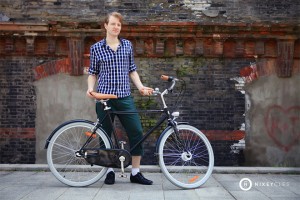Riding a bicycle is an excellent form of exercise that improves your general health while being gentle on your joints. It offers variable resistance, from slow easy cycling to explosive sprints, which means people of all ages and fitness levels can benefit. It’s also a great way to have fun, get fit and spend time with family and friends.
Regular cycling can help manage or prevent many diseases, including obesity, diabetes, coronary heart disease, depression, some cancers and arthritis. This low-impact form of exercise is also a fuel-efficient way to get around, since it takes far less energy to cover one kilometre by bicycle than on foot. Perhaps this explains why the bicycle is such a popular form of transport throughout the world, with an estimated one billion people riding bicycles every day.
Riding to work or to the shops is one of the most time-efficient ways to incorporate regular exercise into your everyday routine. You get your ‘daily dose’ without having to spend extra time at the gym.
Health benefits of regular cycling
The human body was designed for movement. Research indicates that exercising for 30 minutes on most days can offer substantial benefits, even if those 30 minutes are broken up into two or three separate sessions. If you are over 40 years of age, overweight or haven’t exercised regularly in a long time, it is important to see your doctor before you start any fitness program.
The health benefits of regular cycling include:
Increased cardiovascular fitness
Increased muscle strength and flexibility
Improved joint mobility
Decreased stress levels
Improved posture
Strengthened bones
Improved co-ordination
Decreased body fat levels
Prevention and/or management of disease.
Leg muscles and cycling
The legs and buttocks do most of the work in cycling. The thigh is made up of two broad muscle groups. The quadriceps muscle sits on the front of the thigh, starting at the pelvis and attaching to the knee joint. This muscle set straightens the leg.
The hamstrings are on the back of the thigh. They start from the pelvis and attach to the knee. This muscle set bends the leg, helped out by the muscles of the buttocks (called the gluteal muscles), which also straighten the hip.
The muscles of the calf, the gastrocnemius and the soleus, control the movements of the foot on the pedal, while the deep muscles of the calf act on the toes. Regular cycling improves leg strength and can often be used as a form of rehabilitation for certain leg injuries.


Sample comment to show how it will look
A reply to the comment